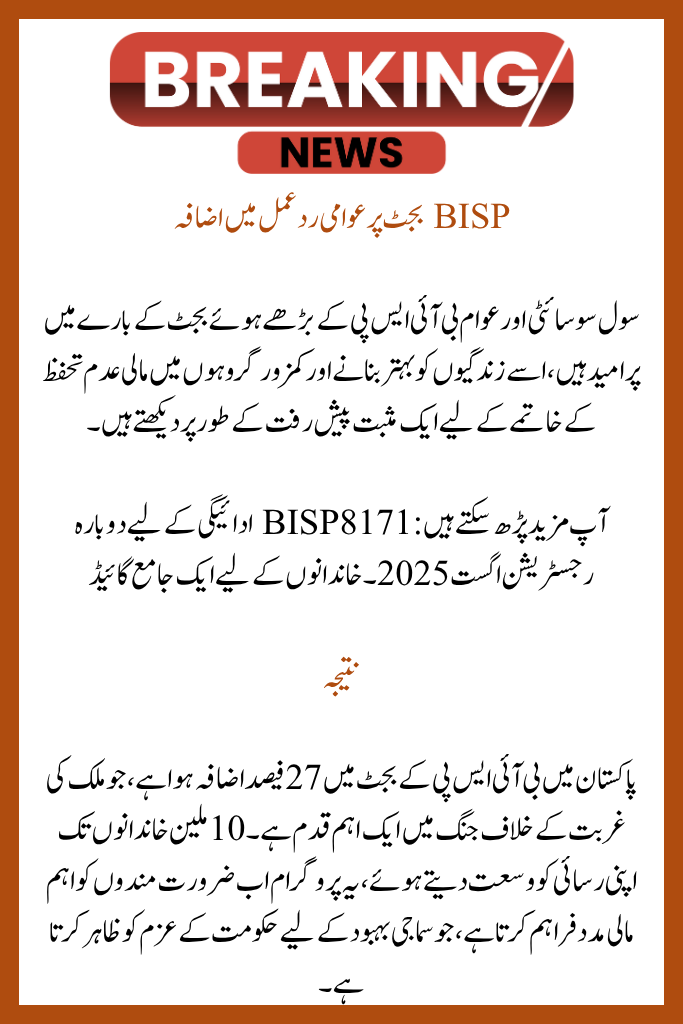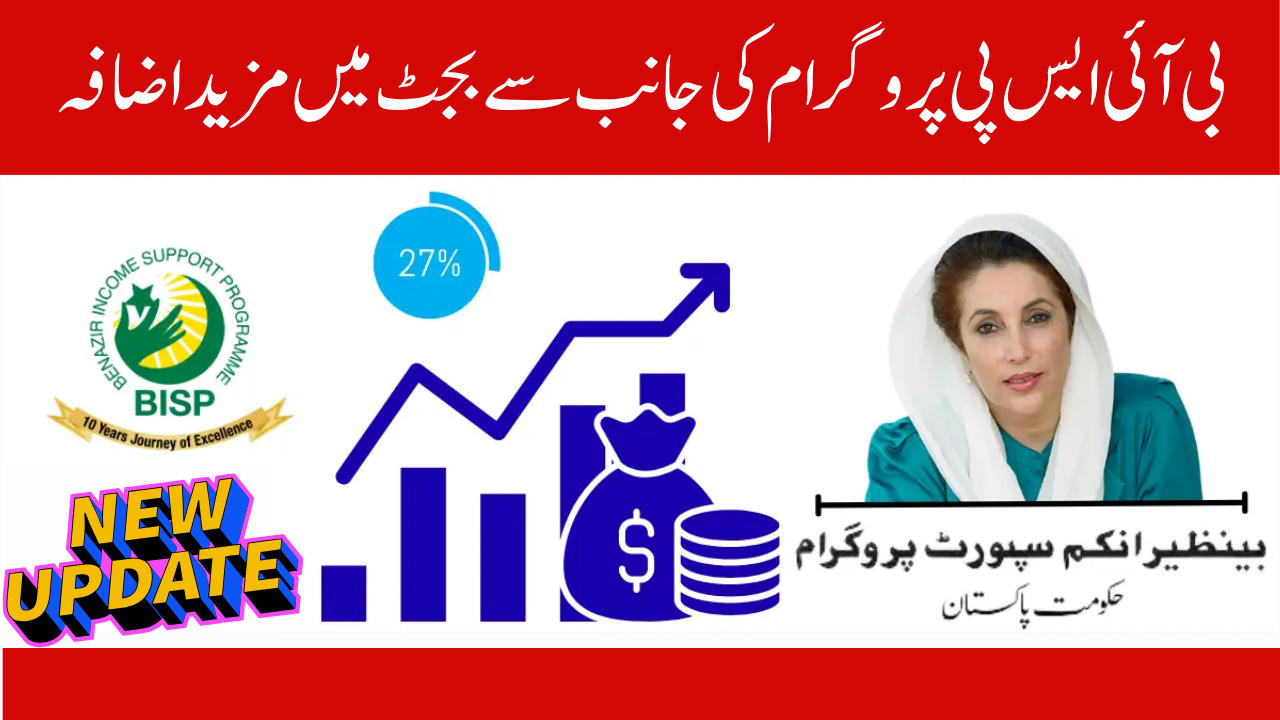The BISP budget in Pakistan has grown by 27%, enabling the Benazir Income Support Programme to provide financial assistance to 10 million families, strengthening the social safety net and providing relief to millions facing economic hardship, as per the budget increase. The additional funding boosts beneficiaries and enhances fund distribution efficiency. Cash transfers provide essential support for daily living expenses for vulnerable households, enhancing their overall welfare.
You can read more: The most recent information and registration guide for the Benazir Income Support Program 8171 2025
The BISP budget’s impact increased by 27%.
The recent budget increase for the BISP program expands coverage and support for low-income families, enabling the program to include more previously excluded families, thereby ensuring a wider population benefits from social protection.
Overview of the Program
The budget increased by 27%, covering 10 million families, offering cash transfers for basic needs, and focusing on expansion, payment upgrades, transparency, and social impact, with potential for further funding.
| Category | Details |
|---|---|
| Budget Increase | 27% |
| Total Families Covered | 10 million |
| Purpose | Poverty alleviation, social safety net expansion |
| Key Benefits | Cash transfers for daily living, reduced poverty gap, improved welfare |
| Implementation Focus | Expansion of registration, upgraded payment systems, transparency |
| Challenges | Identification issues, logistical barriers, administrative bottlenecks |
| Impact on Society | Strengthens social protection, supports vulnerable groups during inflation |
| Public Response | Positive reception from civil society and beneficiaries |
| Future Outlook | Potential for sustained budget growth to deepen poverty alleviation efforts |
Ten million families will benefit from an increase in the BISP funding.
BISP Budget Increase Impact
• Extends support to 10 million families, demonstrating the government’s efforts to alleviate poverty and reduce socioeconomic disparities.
• Timing of increase is crucial due to rising commodity prices and ongoing economic challenges.
• Demonstrates a proactive approach to safeguard the welfare of vulnerable societal segments.
How the Increased BISP Budget Will Be Put to Use
BISP Budget Increased Funds
• Expand beneficiary registration to include more eligible families.
• Upgrade payment methods for faster, secure cash transfers.
• Strengthen monitoring systems to reduce misuse and increase transparency.
• BISP’s vital role in Pakistan’s social protection landscape.
Difficulties Even With an Increased BISP Budget
BISP Budget Challenges
• Identification issues
• Logistical barriers
• Administrative bottlenecks
• Need to maximize benefits of increased funds.
Prospects for the Future Following the BISP Budget Increase
BISP Budget Increase: Positive Precedent
• Sustained increases could transform poverty alleviation.
• Deepen the program’s impact.
Increased Public Reaction to the BISP Budget
Civil society and the public are optimistic about the increased Benazir budget, viewing it as a positive development to enhance lives and alleviate financial insecurity among vulnerable groups.
You can read more: Re-registration for 8171 BISP Payment August 2025. A Comprehensive Guide for Families
Conclusion
The Benazir budget in Pakistan has increased by 27%, marking a significant step in the country’s fight against poverty. Expanding its reach to 10 million families, the program now provides critical financial support to those in need, demonstrating the government’s commitment to social welfare.

FAQs
1. For what reason is the Benazir budget being increased by 27%?
In order to fight poverty in the face of growing inflation, the increase seeks to boost coverage to 10 million households, enhance payment efficiency, and fortify monitoring mechanisms.
2. To whom would the larger Benazir funding be advantageous?
Pakistani low-income and disadvantaged families, many of whom were not previously included in the program.
3. What will be done with the extra money?
More eligible families will be registered with them, payment mechanisms will be upgraded for quicker transfers, and improved monitoring will increase transparency.
4. What obstacles may the budget increase cause?
Issues with beneficiary identification, payment delays due to logistics, and administrative bottlenecks are examples of potential difficulties.
5. How has the budget increase been received by the general public?
Civil society and the general public have reacted favorably, viewing it as a step toward reducing poverty and bolstering social safety.
